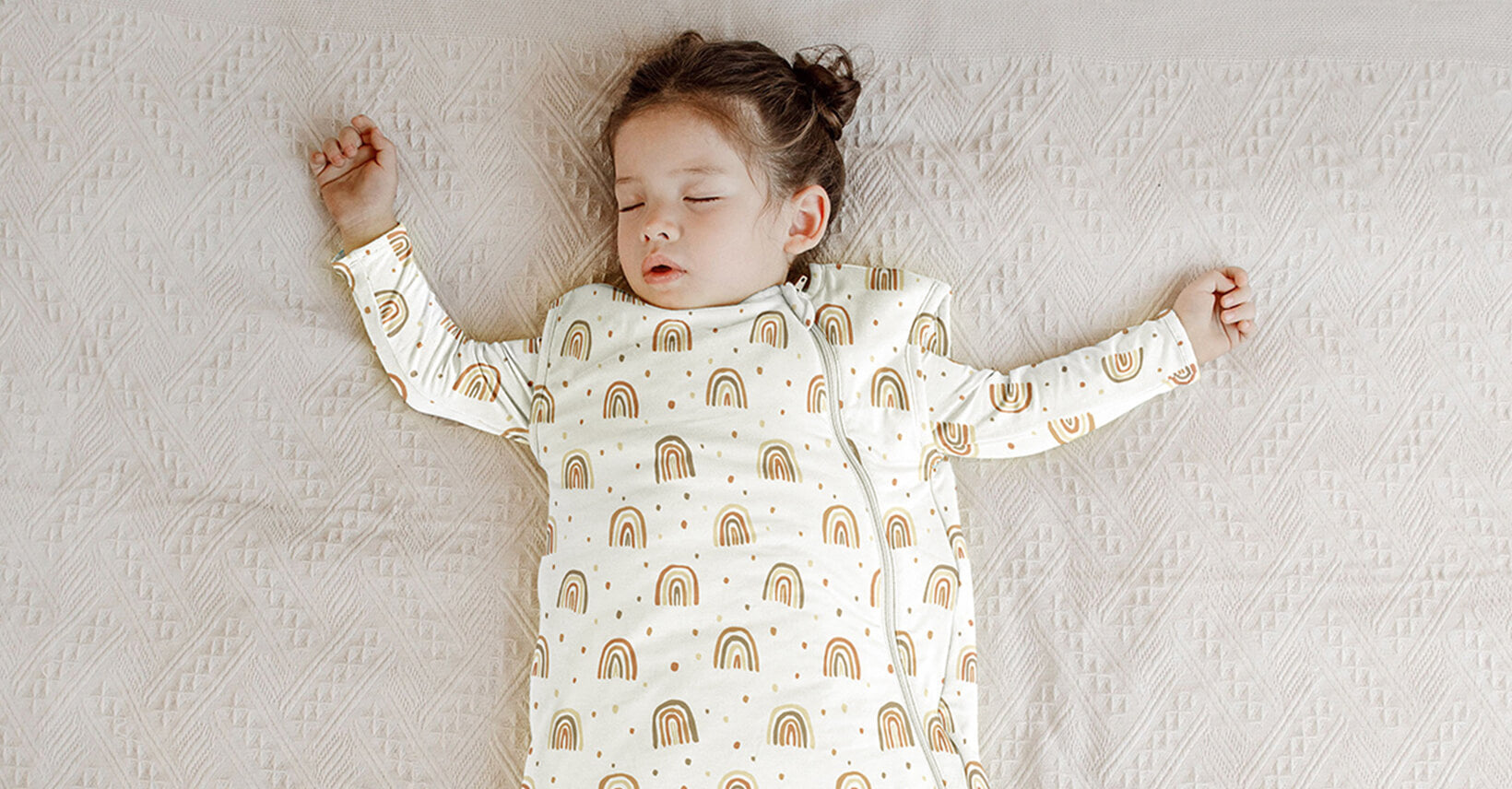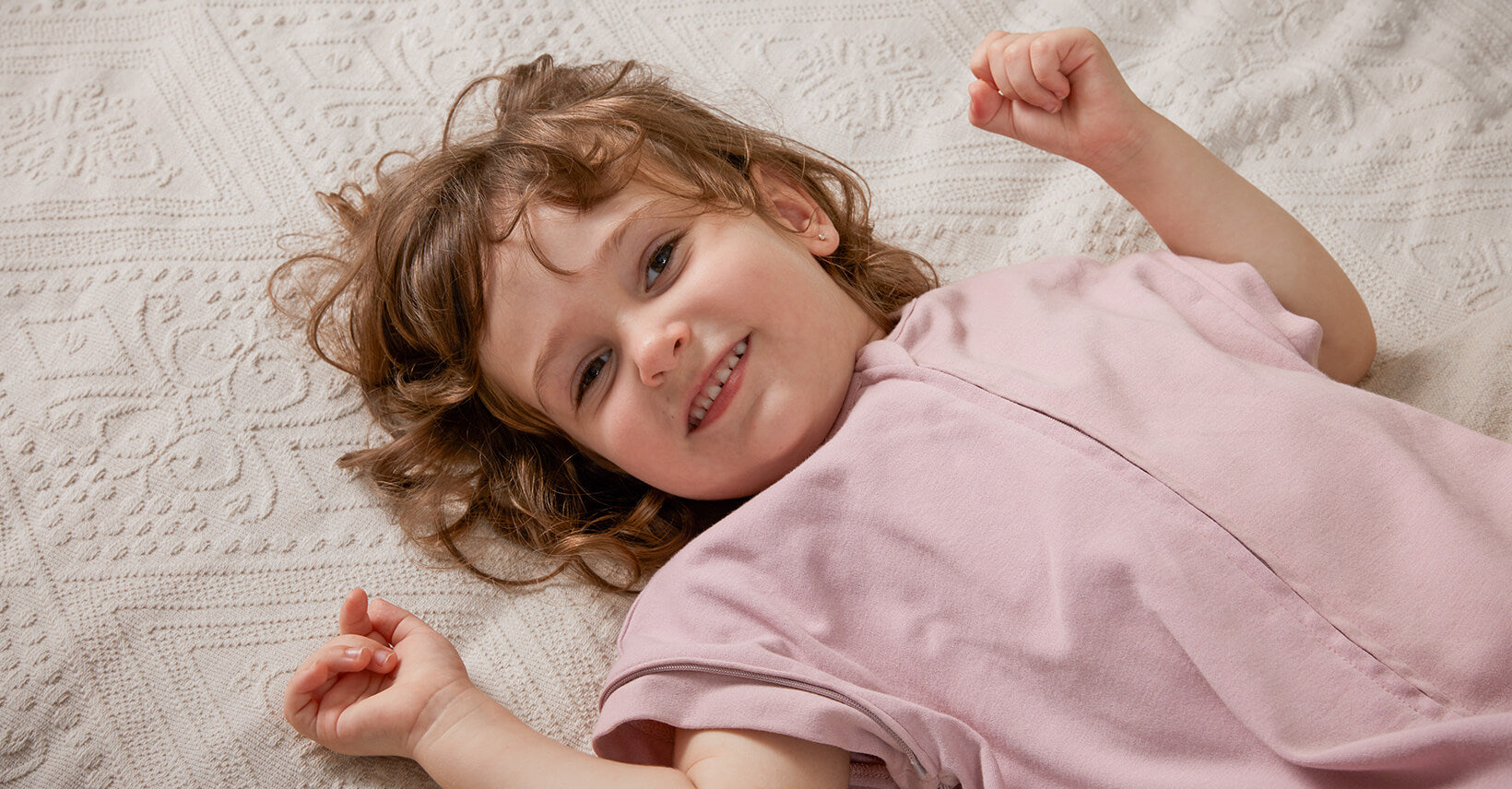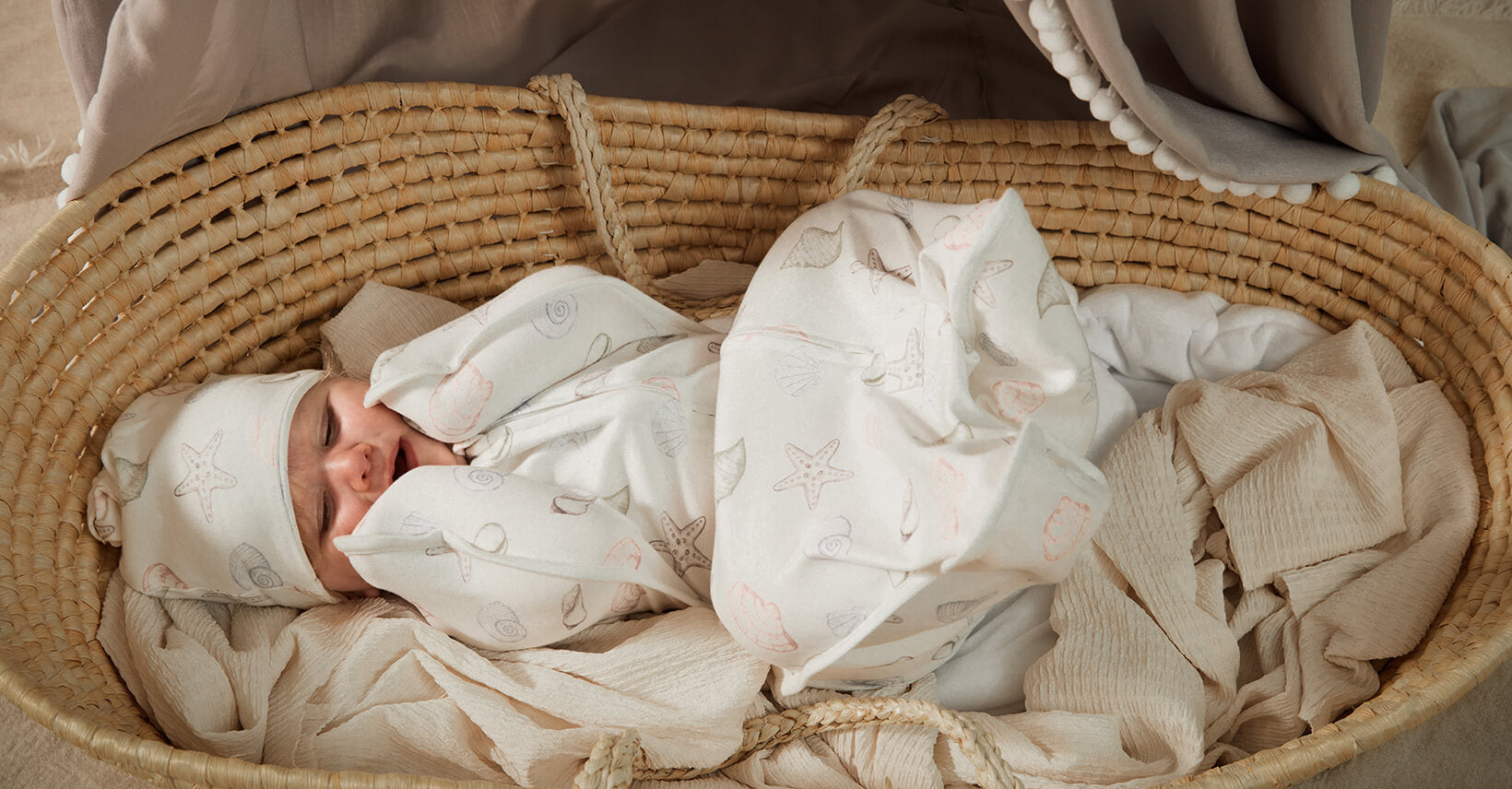
When to transition out of sleep sack?
Many parents will worry about how to transition babies who are used to sleep sacks from a young age to the age when stop using them? When exactly should babies stop using sleep sacks? Can they still have a good night's sleep without a sleep sack?
Here I can tell parents for sure: don’t worry, babies can transition naturally from sleep sacks to quilts and blankets.
I have the best example around me. My colleague, Jessica's baby Elizabeth has been using a sleep sack since she was born. When she was in kindergarten, she naturally took off the sleep sack and got into her little blanket without any discomfort.
Growth is such a natural process. When it's cold, babies naturally go to find blankets. This is a physiological response and physical instinct that comes with babies' perception and cognition.
Seeing her, you may want to ask, is there a specific time to stop using sleep sacks?
Because each child grows at a different rate, there is no fixed answer to when to stop using a sleep sack. But here are a few ideas for parents that may work for most babies.
When the size no longer fits
Most sleep sacks manufacturers make sleep sacks suitable for babies under 36 months, and some are even as young as 24 months. This means that the options of sleep sacks become very limited. Instead of trying to find a new one, parents should just stop using it, because few people use a sleep sack for a lifetime.

when the temperature is comfortable
We all know that autumn and winter are flu seasons. Let alone a baby, and even adults are prone to catch a cold at night. Therefore, it is recommended that babies stop using sleep sacks and start using blankets in spring or summer with small temperature changes. On the one hand, the risk of colds for babies can be avoided to a certain extent. On the other hand, parents don't lose more precious sleep by constantly checking their baby's blankets at night.
Before transitioning your baby from the crib to the bed
I have to say, and this method is recommended as it also helps the baby transition from crib to bed. Most babies are accompanied by a variety of bedding from birth. From swaddling to using a sleep sack to sleeping independently, the process is spent in a crib. However, as babies grow to a certain age, not only do they need to get used to going from sleep sacks to blankets, but they also need to transition from crib to bed. This process can be a bit difficult, so start by putting your babies under a blanket in a familiar environment, and by the time they have to stop using the sleep sack and crib, they can also get used to it more naturally and feel less uncomfortable. Isn't this a matter of killing two birds with one stone?
Before toilet training
When it comes to overnight toilet training, three-and-a-half to four years old seems to be about average - which also happens to be when babies transition out of sleep sacks. I have to sigh that there are so many changes that parents and babies have to face. But don't worry, step by step, before the toilet training, just give the babies a chance to get out of the sleep sack and learn to go to the toilet by themselves at night. If babies are lying on a blanket bed, they can easily get up and go to the toilet when they have needs at night and may not wake the parents in the process. After a few tries, babies will get used to not only the blanket and the bed but also going to the toilet independently at night. Growth is a gradual process.
Of course, it is undeniable that there may be a small number of babies who will need a longer transition time. But parents can't give up eating because of choking and don’t give up using sleep sacks for babies. What we need to know is that the benefits of using sleep sacks can make the transition period less of a problem.
So how to choose a sleep sack? From swaddling to using sleep sacks to independent sleep, choosing a good sleep sack will make the child better transition each sleep period, especially for the independent sleep period, a suitable sleep sack will help the baby transition smoothly to the blanket.
Babies' sleep sacks can be selected from three aspects: thickness, styles suitable for different ages, details, and materials.
1. Select the thickness according to the temperature.
This can be selected to refer to the TOG index above and the indoor temperature.
2. Consider the characteristics of different developmental stages of the baby.
From birth to when the baby is 3 or 4 months old, the newborn sleep sacks can prevent startle reactions, stimulate the uterine environment, and make the baby sleep more peacefully and comfortably. This type of sleep sack can enhance the baby's sense of security and reduce startle reflex and crying, make the baby sleep better, ensure that the baby sleeps on the back, and reduce neonatal sleep accidents (including sudden neonatal death). But it should be noted that: This swaddle-style sleep sack that binds the babies’ hands will make it difficult for them to turn over, so when babies learn to turn over (usually 4 or 5 months old), parents should stop using this sleep sack. And at this time, the baby's height and weight have also changed a lot, and the previous sleep sack may not be able to be worn. There are many sleep sacks available to babies at this stage. Such as short sleeves sleep sacks or sleeveless sleep sacks, and some sleep sacks have overlapping features. Those type of sleep sack mainly means that the hem of the sleep sack is closed. In addition to the regular thickness, there are thickened heated sleep sacks that can be used in winter without covering the blanket.

Split-leg sleeping bags mean that the legs are designed separately. This sleeping bag is suitable for the largest range and can be used by babies over 6 months until childhood. Especially suitable for babies who are restless to sleep. When choosing a split-leg sleeping bag, you need to pay attention not to buy it too thick or too tight. It will wrap the baby like a cotton coat, which is not conducive to heat dissipation and is also very uncomfortable.

3. Pay attention to the details of the sleep sack's material, zipper design, etc.
- Is it a two-way zipper or is the end of the sleep sack easy to open. This determines whether the sleep sack is easy to put on or take off and whether it is easy to change diapers.
- Whether the buttons and zippers are likely to hurt the baby, take a closer look at the zipper handling of the sleep sack to see if it can be hidden. The same for snaps. Try to choose resin snaps instead of metal ones.
- Five tips for safe use of sleeping bags
- Do not add a blanket or quilt to the sleep sack. In particularly cold winters, you can put long-sleeved rompers inside for your baby and then put on a sleep sack. (Baby rompers typically consist of a top with shorts or trousers. The Kaiya Baby baby rompers are constructed from breathable, sustainable fabrics like organic cotton, and bamboo fiber, which are ideal for all occasions, like daily wear, play wear, sleepwear, etc.)
- Buy a thicker sleep sack if it is still not warm enough.
- The ideal sleeping temperature is 16°C ~ 20°
- Make sure your baby is wearing the right size, neither too big nor too small.
- Regardless of the type of sleep sack, make sure there is enough room in the bottom of the sleep sack for your baby's legs to kick freely.
There will be many things that require a transition period in the growth process of every child, but with the increase of age, their independent ability will also become stronger, and even many things can be completed independently without the participation and company of parents. Therefore, the attention and companionship of parents in childhood are particularly precious and important. The cognitive level of early babies is immature. From eating and sleeping to learning to talk and walk, whether it is living habits or cognition of the world, parents should guide them correctly.
After all, parents are the first enlightenment teachers of babies. Inexperienced parents don't have to worry, Kaiya Baby will be with you. We will share with you professional parenting guidance and provide scientific help to accompany your babies through every transition period smoothly. It's really fun to watch babies go from toddlers to babbling for parents, and how fortunate is Kaiya Baby to be able to witness these changes.

Yujia Shi
An expert in sleep sack design, is a valued contributor to Kaiya Baby's blog. With a strong background in baby sleep bags and maternal care, she is highly regarded for her professionalism. Yujia Shi prioritizes baby comfort and safety in her designs, using high-quality materials. Her insightful articles on sleep bags have been featured in reputable publications and have gained a significant readership. Trust Yujia Shi to help you create a comfortable and safe sleep environment for your baby, backed by her proven track record in the industry.



Leave a comment
This site is protected by reCAPTCHA and the Google Privacy Policy and Terms of Service apply.